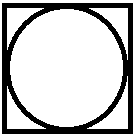Grade 9 & 10 math probability for SAT, Math Kangaroo, and AMC10 Preparation.
Grade 9 & 10 math probability for SAT, Math Kangaroo, and AMC10 Preparation.
Probability is the likelihood that an event will occur. It is written as a fraction with the number of favorable outcomes as the numerator and the total number of outcomes as the denominator.
Theoretical probability is the probability that is calculated using math formulas. This is the probability based on math theory.
Experimental probability is calculated when the actual problem is performed as an experiment. In this case, you would perform the experiment, and use the actual results to determine the probability. More...
In the world of probability, compound events are probabilities of two or more things happening at once. For example, what is the probability that you forgot to do your homework andthere will be a pop quiz in class?
There are 2 types of compound events: More...
Two events are said to be independent if the result of the second event is not affected by the result of the first event. If A and B are independent events, the probability of both events occurring is the product of the probabilities of the individual events. If A and B are independent events:
P(A and B) = P(A) • P(B)
Here is an example of independent event and how to calculate its probability: More...
An efficient way of counting is necessary to handle large masses of statistical data (e.g. the level of inventory at the end of a given month, or the number of production runs on a given machine in a 24 hour period, etc.), and for an understanding of probability.
Addition rule and Multiplication rule are techniques that will enable us to count:
Suppose we have an event E, defined as More...
In Mathematics we use the following definition:
· If the order does matter it is a Permutation.
· If the order doesn't matter, it is a Combination.
Here is an example of permutation: suppose you buy a combination lock for your locker. The combination for your lock is set at “647”. Obviously, the order of the combination matters. "647" works, but “476” will not work, nor will “764”. More...
Geometric probability is really a very easy concept as long as you know that the formula for basic probability is:
# of favorable outcomes / # of total outcomes
Let’s look at an example:

If it is difficult to calculate the probability of an event, try to find another event that is logically equivalent to the concerned event, and see if its probability is easier to calculate. Two logically equivalent events should have the same probability.
More...
Consider the equation a+b+c+d = 12, where a b c d are non-negative integers. We're looking for the number of solutions this equation has. That is to say, we are looking for number of ways we can distribute 12 among the 4 variables a, b, c, and d.
We have 12+3=15 places (12 for each 1 adding up to 12, and 3 for the 3 plus signs to combine a b c d together), where we put stars (for numbers) and bars (for plus signs), one item per place. The key idea is that this configuration stands for a solution to our equation. For example
{*|*****|****|**}
Stands for the solution 1+5+4+2=12. Similarly
{|*****|***|****}
Denotes the solution 0+5+3+4=12, because we have no star at first, then a bar, and similar reasoning like the previous.
We see that any such configuration stands for a solution to the equation, and any solution to the equation can be converted to such a stars-bars series. So our problem reduces to "in how many ways can we place stars and bars in places?" This is the same as fixing places out of places and filling the rest with stars. We can do this in, of course, C(3, 15) ways (combination, not permutation, of choosing 3 out of 15). So the number of solutions to our equation is C(3, 15) = 455.
More...